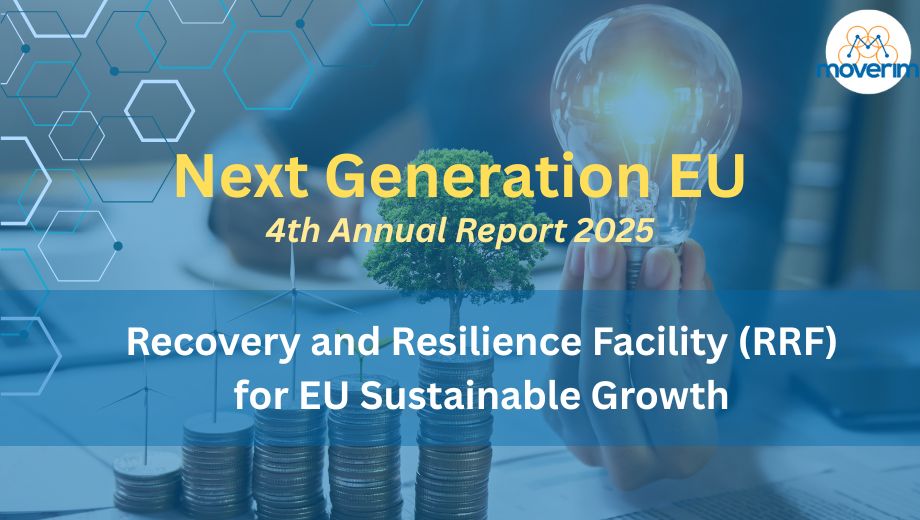
As the European Union approaches the 2026 deadline for the Recovery and Resilience Facility (RRF), the European Commission’s Fourth Annual Report, released on 8 October 2025, offers a comprehensive look at how the flagship programme of NextGenerationEU continues to transform Europe’s economy. With €362 billion disbursed to date — 55% of the total allocation — the RRF remains the driving engine of Europe’s post-pandemic recovery, supporting over 2,586 milestones and targets across the Union. The report underscores that public investment has not only recovered but expanded, with total EU investment expected to rise to 3.8% of GDP in 2025, compared to 3.2% in 2019. This increase, fuelled by both EU and national funding, marks a historic shift from past crises where public investment typically declined.
Sustaining Growth and Reform in a Complex Environment
The RRF has been implemented amid a challenging global context marked by war, inflation, and supply chain disruptions. Yet, the report shows that Europe’s response has remained strong and coordinated. Every Member State has now integrated a REPowerEU chapter, focusing on diversifying energy sources and supporting vulnerable households.
The RRF’s dual approach — combining reforms and investments — has proved particularly effective. So far, 26 Member States have submitted 98 payment requests, resulting in €295 billion in grants and €141 billion in loans. Countries such as Italy, France, Germany, Denmark, and Malta have already received more than 65% of their allocations, while others are encouraged to accelerate implementation to meet the 31 August 2026 deadline for completing all measures. The Facility has also driven forward structural reforms, with over 282 reforms focused on improving public administration, taxation, procurement, and justice systems. Around 346 reforms relate to the green transition, while more than 140 reforms address education, skills, and labour market policies.
A Green and Digital Transformation
The RRF continues to make significant contributions to the EU’s green and digital objectives, with 42% of total allocations supporting climate action and 25% promoting digital transformation — both above the legally required thresholds. So far, the programme has helped install over 900,000 clean vehicle charging points, connected 16 million homes to high-speed broadband, and supported major investments in renewable energy, sustainable mobility, and energy efficiency.
Through NextGenerationEU Green Bonds, the Commission has issued €75.1 billion in sustainable finance instruments, making the EU one of the world’s largest green bond issuers. These funds are expected to reduce annual greenhouse gas emissions by 54.7 million tonnes, equivalent to about 1.5% of the EU’s total emissions.
Accountability and Protection of EU Funds
Transparency and accountability remain central to the programme. The Commission reports that fewer than 1% of milestones and targets have been suspended since 2021, with 98% of suspended funds eventually disbursed once corrective measures were implemented. Cooperation with the European Court of Auditors (ECA) has intensified, with the Commission implementing most of the ECA’s recommendations and further strengthening anti-fraud controls in partnership with OLAF and the European Public Prosecutor’s Office (EPPO).
By 31 August 2025, 77 potential irregularities had been reported to OLAF, leading to 13 recommendations, while the EPPO had opened 84 investigations, the majority of which are ongoing. These figures reflect the strong coordination between national and EU-level systems in protecting the Union’s financial interests.
With 44% of the RRF allocation still to be disbursed, the coming months will be critical. The Commission calls on Member States to review and streamline their national plans before the end of 2025, ensuring that only measures that can be fully implemented by the 2026 deadline remain. The message is clear: now is the time to accelerate and deliver on the agreed objectives.
The NextGenerationEU initiative has proven to be a significant financial instrument intended for recovery and transformation within the EU. While providing funding linked to reforms, its ultimate impact on the EU’s goal to emerge from crisis in a stronger, greener, and more unified state remains to be fully realized and objectively assessed across all member states.
For more information and the latest updates, please visit:
Fourth annual report on the implementation of the Recovery and Resilience Facility